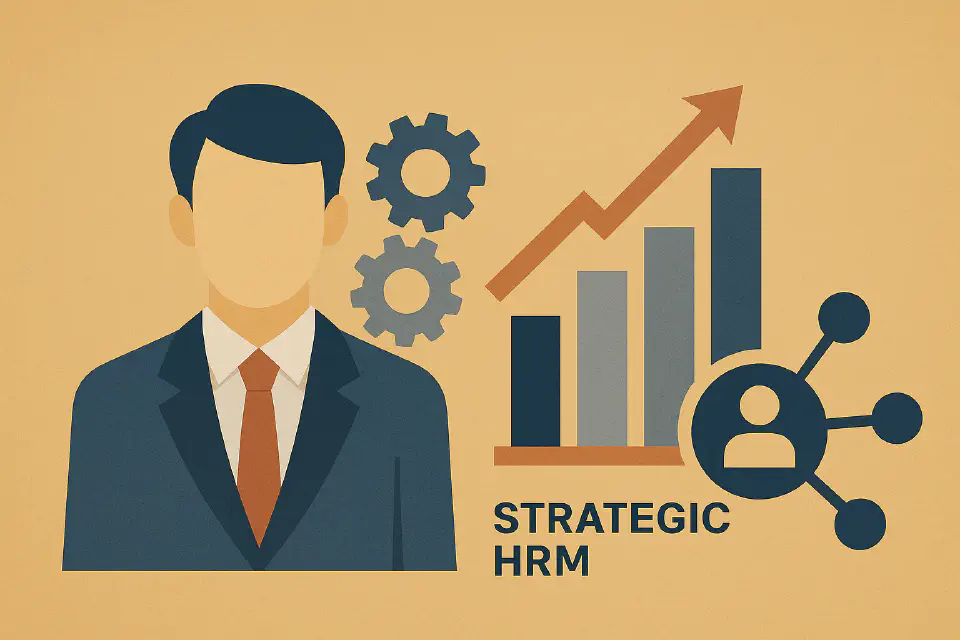
Strategic HRM (SHRM)
Strategic HRM isn't just HR with a plan—it's about embedding people into the core of business strategy. And when done right, it changes everything.
Strategic Human Resource Management (SHRM) represents a significant shift from the traditional administrative role of HR. It’s about aligning HR policies and practices directly with the overarching goals of the business—not as an afterthought, but as a core driver of performance and competitive advantage.
SHRM transforms HR from a support function into a strategic partner, capable of influencing direction, enabling growth, and shaping culture.
What Is Strategic HRM?
Strategic HRM is the proactive management of people. It involves designing and implementing HR systems—such as recruitment, development, performance, and rewards—that are aligned with long-term business objectives.
Unlike traditional HRM, which may focus on operational efficiency or short-term needs, SHRM is long-term, intentional, and tightly connected to the company’s mission, values, and goals.
The Rationale for SHRM
Why is SHRM so critical today?
- Global competition and fast innovation cycles demand adaptable workforces.
- People are assets, not costs—when well managed, they create value.
- Culture, leadership, and engagement are central to performance.
- Technology and data allow HR to measure and influence outcomes.
Companies can no longer afford to separate people management from core strategy. SHRM ensures talent decisions support growth, agility, and sustainability.
Key Models in SHRM
Two of the most cited models that shaped SHRM thinking are the Harvard Model and the Michigan (Matching) Model. We explore them in depth on their respective pages, but here’s a quick contrast:
- The Harvard Model emphasizes stakeholder balance, employee influence, and long-term consequences.
- The Michigan Model stresses alignment between HR systems and business strategy—“fit” above all else.
Strategic HRM in Practice
Implementing SHRM involves several components:
- Workforce Planning: Forecasting future talent needs based on strategic plans.
- Talent Acquisition: Recruiting not just for current roles, but for future capabilities.
- Performance Management: Aligning goals, feedback, and rewards with strategic outcomes.
- Leadership Development: Building leaders who can execute and evolve strategy.
- Organizational Design: Structuring teams, roles, and workflows for adaptability.
Challenges and Barriers
Even with a clear business case, SHRM is not easy to implement. Common obstacles include:
- Short-termism: HR being consumed by operational issues or urgent tasks.
- Lack of strategic capability: HR leaders may lack business acumen or access to strategic forums.
- Disconnection: Misalignment between C-suite goals and HR programs.
- Data gaps: Inability to measure impact or forecast talent needs.
SHRM and Organizational Performance
There is significant empirical evidence that SHRM practices improve outcomes:
- Higher employee engagement and retention
- Better innovation and productivity
- Faster adaptability to change
- Increased shareholder value
A meta-analysis by Combs et al. (2006) found that high-performance HR systems are positively associated with firm performance across industries.
From Strategy to Action
To bring SHRM to life, HR must:
- Understand the business—its drivers, markets, and competitive edge.
- Translate strategy into people terms—what capabilities, structures, and behaviors are needed?
- Design HR programs accordingly—from hiring to recognition.
- Measure impact—using KPIs, feedback, and people analytics.
Strategic HRM Across Contexts
SHRM looks different depending on:
- Company size and maturity
- Industry type (tech vs. retail)
- National context (labor laws, culture)
- Strategic priorities (growth, consolidation, innovation)
That’s why strategic HRM is not a one-size-fits-all formula—it’s a mindset and capability to align people with purpose.
Conclusion
Strategic HRM marks a turning point in how organizations view and manage their people. It shifts the narrative from “HR supports the business” to “HR shapes the business.”
But it’s not just about alignment—it’s about partnership, insight, and foresight. Organizations that master SHRM position themselves to thrive not just today, but well into the future.
Next: A deeper look at one of SHRM’s most influential frameworks—the Harvard Model of HRM.